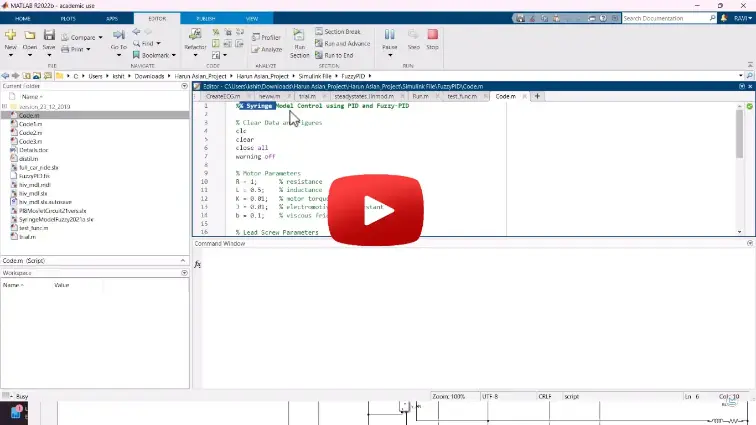Introduction
MATLABSolutions demonstrate In this particular task, Simulating an electrical vehicle (EV) model using MATLAB is a complex task that involves various components and requires knowledge of multiple domains, including electrical engineering, control systems, and mechanical engineering.
Methodology
Here's a high-level overview of the steps involved in creating an EV model simulation in MATLAB:Modeling the Vehicle Dynamics:Start by defining the basic vehicle dynamics, including mass, inertia, tire characteristics, and aerodynamics.Choose a suitable vehicle dynamics model, such as a bicycle model, to represent the motion of the vehicle.Electrical Powertrain Modeling:Model the electrical components of the powertrain, including the battery, motor, inverter, and power electronics.Define the characteristics of the battery, such as capacity, voltage, and discharge curves.Model the motor and its control algorithms.Implement a power inverter model.Control Systems:Develop control algorithms for various aspects of the EV, including motor control, regenerative braking, and energy management.Implement PID controllers, state-space controllers, or other suitable control techniques.Simulation Environment:Set up the simulation environment in MATLAB/Simulink.Create a Simulink model that integrates all the components of the EV, including the vehicle dynamics, powertrain, and control systems.Testing and Validation:Validate the model against real-world data and measurements.Fine-tune the parameters and control strategies to ensure that the simulation matches the behavior of a real EV.Data Visualization and Analysis:Use MATLAB's plotting and analysis tools to visualize and analyze the simulation results.Monitor variables like battery state of charge, motor speed, and vehicle speed over time.Sensitivity Analysis:Perform sensitivity analysis to understand how different parameters and operating conditions affect the performance of the EV.Energy Efficiency and Range Estimation:Calculate the energy consumption and estimate the range of the EV under various driving scenarios.Testing Scenarios:Create different test scenarios to evaluate the EV's performance, including acceleration, deceleration, and cornering.User Interface (Optional):Develop a user interface if you want to create a user-friendly tool for users to interact with the simulation.Optimization (Optional):Explore optimization techniques to improve the energy efficiency or other performance aspects of the EV.

